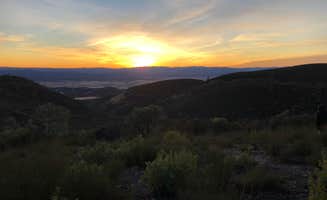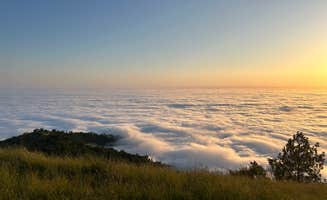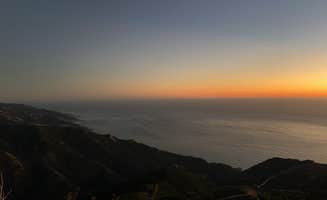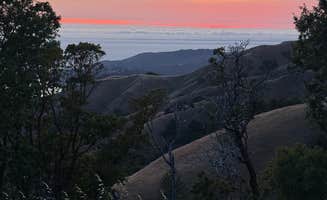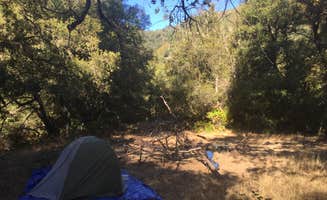Dispersed camping areas near Jolon, California sit primarily within the Los Padres National Forest at elevations ranging from 1,500 to 5,100 feet. The region typically experiences hot, dry summers with temperatures reaching 90°F and cool winters with occasional freezing temperatures. Most rustic camping sites in this area lack cellular service, requiring visitors to download maps and coordinates before arrival.
What to do
Stargazing after sunset: The ridge camping areas provide exceptional night sky viewing conditions. At Timber Top Camp, campers report extraordinary celestial visibility from various tent sites. "This might be the most beautiful camping spot I have ever stayed at. It's a ~2.8 mile hike in, but it is worth every step," reports one visitor.
Hiking inland trails: Several backcountry trail networks connect dispersed camping areas. The Carmel River Trail passing through Bluff Camp requires multiple river crossings. "I had to cross the river about 50 times in a weekend in an out & back trip," notes one backpacker, making it ideal for experienced hikers with proper footwear.
Off-road exploration: Many campsites require driving on unmaintained roads that become attractions themselves. A visitor to Plaskett Ridge Dispersed Campground describes it as "A great location for pro-overlanders and for testing 4x4 off-road driving skills," with opportunities to test vehicle capabilities on challenging terrain.
What campers like
Sunrise viewing spots: The elevated position of many campsites provides exceptional dawn experiences. One camper at Williams Hill notes, "Beautiful sunrise off the hill in the morning and plenty of birds hanging out to watch while making our camp breakfast."
Above-fog camping: Several areas sit above the marine layer that frequently blankets the coast. A visitor to Will Creek Road Dispersed shares, "We were above the marine layer and the stars were something else never seen before. Highly recommend. No campfires."
Privacy between sites: Despite primitive conditions, campers value the space between designated areas. At Williams Hill Recreation Area, one reviewer appreciates that sites are "decently spaced out so that's good too," providing better separation than typical developed campgrounds.
What you should know
Road conditions vary seasonally: Access roads deteriorate during and after wet weather periods. One camper at Williams Hill reports, "Our transmission did start heating up as the road was filled with washboard and it was steep and we had to go pretty slow."
Gates may be locked without notice: Several roads close periodically for maintenance or fire danger. A Will Creek Road visitor warned, "Attempted to camp on 12/01/2024 and the road was closed. Beautiful views on the way, but unfortunately the gate was locked."
Site availability fluctuates: Arriving early secures better spots during peak seasons. A camper suggests, "This place was busy! Almost every pull off on the side of the road was taken but we were able to find a spot! Get here early for the best chance of finding a good spot."
Tips for camping with families
Insect preparation essential: Several sites experience significant insect activity during warm months. At Williams Hill, a camper warns, "This is a great BLM campground with picnic tables, fire rings, and picnic shelters. Pretty much the only option for this setup anywhere around. However, the gnats, bees, mosquitoes, and flies are relentless!"
Download offline maps: Cell service becomes unreliable on ridge roads and completely absent at many primitive camping areas. Bring physical maps or download offline navigation before arriving.
Consider wind exposure: Higher elevation sites experience strong winds that can impact tents and camping comfort. Pack additional tent stakes and wind barriers, especially for ridge campsites.
Tips from RVers
Length restrictions matter: Many roads prohibit longer vehicles due to sharp switchbacks and narrow passages. A camper at Williams Hill cautions, "I wouldn't advise big RVs coming up here. Most of the spots only accommodate like van size and down."
Interior dust management: Unpaved roads create significant dust that infiltrates vehicles. One RVer noted, "Nice spot just not a fan of taking a 27 foot 1996 RV up that road," and others mention that "everything was covered in dirt" after driving to campsites.
Limited turnaround areas: Many roads lack adequate space for larger vehicles to change direction. Scout ahead or research reports from other RVers before attempting access with trailers or motorhomes longer than 20 feet.


